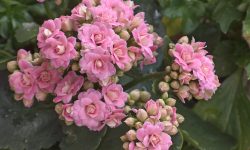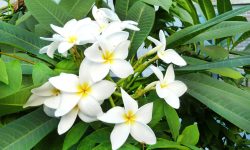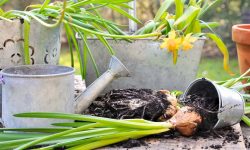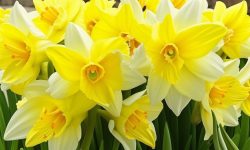Jasmine tea is one of the most beloved floral teas in the world, admired for its soothing aroma and delicate sweetness. This elegant beverage combines the gentle flavor of green or white tea leaves with the natural fragrance of jasmine blossoms. The result is a cup that calms the mind, refreshes the body, and delights the senses. Whether you’re an experienced tea lover or a curious beginner, learning how to make jasmine tea properly can turn an ordinary moment into a peaceful ritual. The process is simple, but it requires patience, attention to detail, and respect for tradition.
Making the perfect cup of jasmine tea is about more than steeping leaves—it’s about balance. Too much heat or steeping time can create bitterness, while too little prevents the full aroma from blooming. The right water temperature, tea-to-water ratio, and steeping duration all contribute to its signature fragrance. In this guide, you’ll learn how to brew jasmine tea like a true tea enthusiast. We’ll explore the different types of jasmine tea, brewing methods, and expert tips for capturing its fresh floral character. By the end, you’ll be able to create a cup that’s fragrant, refreshing, and perfectly harmonious every time.
Understanding Jasmine Tea and Its Origins
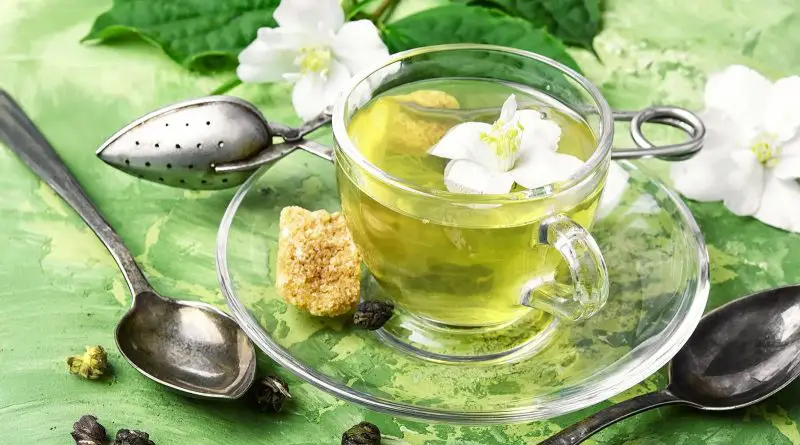
Jasmine tea has a rich and fascinating history that reflects centuries of craftsmanship and cultural refinement. Originating in China over a thousand years ago, it became highly prized during the Song Dynasty for its delicate aroma and calming qualities. Early tea makers discovered that tea leaves could absorb the scent of jasmine blossoms, resulting in a fragrant and refreshing drink. The process involved layering freshly plucked jasmine flowers over dried green tea leaves. As the blossoms opened at night, their aroma infused the leaves, creating the gentle floral flavor that defines jasmine tea. This scenting process was often repeated multiple times to achieve a deeper, more luxurious fragrance. Over time, the tradition spread to Japan, Taiwan, and beyond, becoming one of the most beloved scented teas worldwide.
The type of tea used as a base greatly influences the final flavor. Green jasmine tea remains the most popular, offering a balance between freshness and floral sweetness. White jasmine tea is softer and lighter, known for its subtle aroma and smooth texture. Jasmine oolong provides a richer, slightly buttery taste with floral complexity, while jasmine black tea delivers a bolder, malty flavor that pairs beautifully with jasmine’s perfume. High-quality jasmine teas are still scented naturally, using real flowers rather than artificial oils. This traditional method requires patience but produces a more authentic taste and aroma that cannot be replicated by industrial flavoring.
Jasmine tea also carries symbolic and cultural meaning across Asia. In China, it represents purity and affection, while in Japan, it symbolizes grace and peace. It is often served to guests as a gesture of respect or shared during celebrations to promote harmony. Today, jasmine tea continues to be enjoyed both for its timeless flavor and its relaxing properties. Each sip connects tea drinkers to ancient traditions and the serene artistry of tea-making perfected through generations.
Types of Jasmine Tea and How They Differ
Jasmine Green Tea
asmine green tea is the most popular form of jasmine-scented tea, offering a perfect harmony between the freshness of green tea leaves and the delicate sweetness of jasmine blossoms. The base tea is usually harvested in early spring, when the leaves are young and full of flavor, then carefully stored until summer when jasmine flowers bloom. The scenting process is an art—freshly picked jasmine blossoms are layered over the tea leaves overnight, allowing the leaves to naturally absorb their fragrance. This process can be repeated up to seven times for high-quality tea, creating a more complex and lasting aroma. The finished brew has a light golden-green color with a mellow, refreshing taste and gentle floral finish.
The quality of jasmine green tea depends greatly on the tea base and scenting method. Hand-rolled varieties like Jasmine Dragon Pearl are crafted in China’s Fujian Province, where tea masters follow centuries-old techniques. Each pearl slowly unfurls in hot water, releasing layers of floral aroma. With moderate caffeine and rich antioxidants, jasmine green tea promotes relaxation while gently boosting energy. It’s best brewed at 175°F to 185°F to preserve its sweet, floral essence without bitterness.
Jasmine White Tea
Jasmine white tea stands out for its purity and smoothness, offering a delicate flavor that highlights jasmine’s natural fragrance. It is made from young buds and tender leaves, often from the Silver Needle or White Peony varieties. These leaves are gently dried and infused with fresh jasmine blossoms under carefully controlled temperatures to retain their light sweetness. The scenting process is slower and subtler than with green tea, giving the final brew a mild floral aroma that doesn’t overpower its natural softness. The result is a pale, golden infusion that feels soothing and elegant on the palate.
This tea is naturally low in caffeine, making it perfect for evening enjoyment or moments of quiet reflection. Its antioxidants support healthy skin, reduce stress, and promote better sleep. Jasmine white tea is often enjoyed by those who prefer a soft, luxurious cup with a clean, lingering aftertaste. Brewing at a lower temperature—around 160°F to 175°F—helps preserve its fine texture and aroma. Each sip captures the gentle essence of jasmine, offering a calming and refreshing sensory experience.
Jasmine Oolong and Jasmine Black Tea
Jasmine oolong tea brings together the creamy, rich taste of oolong and the intoxicating scent of jasmine. The partially oxidized leaves create a smooth, full-bodied brew with floral and honeyed notes. Traditional producers in Taiwan and southern China often scent oolong multiple times with freshly picked jasmine flowers, resulting in an aromatic tea with depth and complexity. The flavor begins buttery and slightly toasted, then transitions into a soft floral sweetness. Its medium caffeine level and balanced aroma make it an excellent afternoon tea that pairs beautifully with light pastries or fruit.
Jasmine black tea, by contrast, offers boldness and warmth. The strong, malty flavor of black tea enhances jasmine’s perfume, creating a cup that is both fragrant and robust. It’s an excellent morning tea, offering energy with elegance. Some premium blends use Assam or Yunnan black teas as a base for richer color and depth. Brewed properly, it produces a deep amber infusion with a floral-spiced aroma. Both oolong and black jasmine teas showcase how jasmine scenting complements various oxidation levels, giving each type its own distinctive balance between strength, aroma, and smoothness.
Health Benefits of Jasmine Tea
Promotes Relaxation and Reduces Stress
Jasmine tea is cherished for its calming aroma and soothing effect on the nervous system. The fragrance of jasmine flowers has been scientifically shown to reduce heart rate and induce a sense of tranquility. When inhaled, the scent interacts with the limbic system in the brain, releasing serotonin and dopamine—hormones that elevate mood and reduce anxiety. A warm cup of jasmine tea helps relax muscles, relieve stress, and quiet the mind, making it an ideal drink for moments of rest and reflection. Many people enjoy it before bed as a natural way to unwind and prepare for restful sleep.
In aromatherapy, jasmine is considered one of the most effective natural relaxants. When combined with tea, it enhances emotional stability and reduces fatigue from mental strain. Drinking jasmine tea regularly can help manage everyday stress and improve concentration. The gentle combination of warmth, floral sweetness, and smooth flavor engages the senses and encourages mindfulness. For those living busy lives, jasmine tea offers an easy way to restore balance and bring calmness to both body and mind.
Boosts Immune Health
Jasmine tea strengthens the body’s immune defenses through its high antioxidant content. Rich in catechins, polyphenols, and flavonoids, it helps neutralize harmful free radicals that can weaken the immune system. These compounds also protect cells from oxidative stress, which contributes to aging and chronic disease. Regularly drinking jasmine tea supports white blood cell activity and enhances the body’s ability to resist bacterial and viral infections. It is particularly beneficial during cold or flu seasons when immunity often dips due to stress or lack of rest.
Beyond antioxidants, jasmine tea offers anti-inflammatory properties that help the body recover faster from minor illnesses. It also contains trace minerals like zinc and magnesium, which aid immune cell production and function. The tea’s natural antibacterial qualities can soothe sore throats and ease coughs, providing both comfort and relief. Drinking a warm cup daily not only strengthens the immune system but also promotes a sense of wellness and vitality, making it a perfect natural remedy for long-term health maintenance.
Supports Heart and Digestive Health
Jasmine tea contributes to cardiovascular wellness by improving circulation and reducing cholesterol levels. The catechins found in the tea help lower bad LDL cholesterol and raise good HDL cholesterol, supporting overall heart function. They also reduce oxidative stress on blood vessels, which helps regulate blood pressure. Drinking jasmine tea regularly can reduce the risk of heart-related issues and improve vascular flexibility. Its soothing aroma and gentle caffeine content further encourage relaxation, which also supports heart health.
Digestive benefits are another reason jasmine tea is so valued. It aids in breaking down food and stimulating healthy enzyme production, helping the body process meals more efficiently. The tea’s mild diuretic effect helps cleanse the digestive tract and reduces bloating after heavy meals. Many people enjoy jasmine tea as a natural alternative to sugary drinks or after-meal beverages because it refreshes the palate while supporting digestion. Consistent consumption helps maintain gut balance and contributes to overall metabolic harmony, leaving you feeling lighter and more energized throughout the day.
Choosing the Right Ingredients for Jasmine Tea
Selecting the right ingredients is essential to brewing a fragrant and flavorful cup of jasmine tea. The most important component is the base tea, which determines the overall body and character of the drink. Green tea is the most popular base because of its freshness and ability to absorb jasmine’s floral scent. White tea creates a lighter, sweeter flavor, while oolong and black tea bases produce a richer, more complex aroma. When choosing tea leaves, look for whole, unbroken leaves rather than tea dust or fannings, as they retain essential oils that enhance both flavor and aroma. High-quality jasmine tea is usually scented naturally by layering real jasmine blossoms over tea leaves, not flavored with artificial essences. The difference in taste and fragrance is significant—authentic jasmine tea feels clean, smooth, and deeply aromatic.
Equally important are the jasmine flowers themselves. The best blossoms are harvested early in the morning when the buds are tightly closed, then stored until evening when they open and release their fragrance. These blooms are often from Jasminum sambac, known for its rich, sweet scent. When making jasmine tea at home, use dried or fresh petals that are free from pesticides and chemical sprays. A few blossoms are enough to enhance the aroma without overwhelming the tea’s natural flavor. Mixing too many flowers can make the brew taste bitter or overly perfumed.
Finally, consider water quality and freshness. Pure, filtered water is ideal, as minerals or chlorine in tap water can dull the tea’s delicate aroma. Always use water that has not been previously boiled, as stale water loses oxygen and can make the tea taste flat. The freshness of the ingredients determines how lively and aromatic your jasmine tea will be. With the right balance of high-quality tea leaves, clean water, and pure jasmine blossoms, you can create a beautifully fragrant cup that embodies elegance and harmony in every sip.
Step-by-Step Guide to Making Jasmine Tea
Step 1: Prepare the Right Tea and Equipment
Start by selecting high-quality jasmine tea leaves or a loose-leaf green tea base with dried jasmine blossoms. Loose-leaf tea allows the leaves to expand fully during steeping, which enhances flavor and aroma. You’ll need a clean teapot or glass infuser, a kettle, and filtered water. Avoid using metal teapots or strainers with lingering odors, as they can alter the delicate scent of jasmine. Measure about one teaspoon of loose tea for every eight ounces of water. Having all your equipment ready ensures a smooth and enjoyable brewing process, allowing you to focus on precision and relaxation.
Water quality is crucial to flavor. Always use fresh, filtered water instead of tap water, which may contain chlorine or minerals that can affect taste. The subtle fragrance of jasmine requires clean, neutral-tasting water to shine. For the best results, warm your teapot before brewing by rinsing it with hot water. This step helps maintain a consistent temperature, ensuring that the leaves unfurl evenly and release their fragrance fully once steeping begins.
Step 2: Heat the Water to the Right Temperature
The ideal water temperature depends on the type of jasmine tea you’re using. For jasmine green tea, heat the water to around 175°F to 185°F. For jasmine white tea, keep it slightly cooler—between 160°F and 175°F—to avoid bitterness. If you’re using oolong or black jasmine tea, a slightly hotter temperature around 195°F works best. Boiling water can scorch delicate leaves, leading to a harsh taste and overpowering aroma. The goal is to bring out jasmine’s fragrance while preserving the smooth, sweet undertones of the tea.
Once the water reaches the desired temperature, pour it gently over the tea leaves. The initial contact with hot water helps awaken the aroma, creating a beautiful burst of jasmine fragrance. Cover the teapot or cup immediately to trap the scent. Temperature control is the foundation of perfect brewing—too cool and the tea will taste flat; too hot and it becomes bitter. Investing in a simple kitchen thermometer or electric kettle with temperature settings ensures consistent results every time.
Step 3: Steep the Tea Perfectly
Steeping time determines how fragrant and flavorful your jasmine tea will be. For most jasmine green or white teas, steep for 2 to 3 minutes. Oolong and black jasmine teas may need up to 4 minutes for a fuller body. Longer steeping times don’t necessarily mean stronger flavor—in fact, they often create bitterness that masks the delicate floral notes. The best approach is to taste after a couple of minutes and adjust based on your preference. The perfect cup should be smooth, fragrant, and slightly sweet with no harsh edges.
After steeping, strain the leaves immediately to stop the brewing process. Leaving the leaves in water too long will continue extraction and cause the flavor to deteriorate. If you plan to re-steep the same leaves, shorten the time slightly for the next brew. High-quality jasmine teas can be steeped two to three times while still retaining their aroma. Take a moment to inhale the fragrance before sipping—it’s part of the experience. A well-steeped cup of jasmine tea offers a balance of warmth, freshness, and gentle floral sweetness that soothes both mind and body.
Common Mistakes to Avoid When Brewing Jasmine Tea
Using Water That’s Too Hot
One of the most frequent mistakes when brewing jasmine tea is using boiling water. High temperatures can scorch delicate tea leaves, causing bitterness and destroying the floral aroma that makes jasmine tea so special. The goal is to release the fragrance gently, not burn it. For most jasmine green teas, the ideal temperature is between 175°F and 185°F. White jasmine tea requires even cooler water, around 160°F to 175°F, to preserve its sweetness. Pouring boiling water directly onto the leaves not only ruins the taste but also flattens the aroma, leaving a dull cup.
To avoid this, allow your boiled water to cool for one to two minutes before pouring it over the tea. Using a kettle with temperature control is a simple way to ensure accuracy. Water that’s slightly cooler helps jasmine tea maintain its gentle, refreshing flavor and smooth texture. Proper temperature control is the foundation of successful brewing and enhances the calming floral notes that define this tea.
Steeping for Too Long
Another common error is letting jasmine tea steep for too long. Many assume that longer steeping enhances flavor, but it often leads to bitterness and astringency. Jasmine tea, especially green and white varieties, contains natural tannins that become harsh when over-extracted. The result is a dry, unpleasant taste that overpowers the delicate floral aroma. For most jasmine teas, steeping for two to three minutes is perfect. Oolong and black jasmine teas may need an extra minute for depth, but anything beyond that risks ruining the cup.
If your tea tastes too strong, try reducing the steeping time or lowering the water temperature. Remember that quality jasmine tea can be steeped multiple times—each infusion reveals new layers of aroma and taste. A shorter first steep followed by slightly longer re-steeps often produces the most balanced flavor. Proper timing ensures that your tea remains smooth, fragrant, and naturally sweet without bitterness.
Using Poor-Quality Tea or Tap Water
Even with the right technique, poor ingredients can ruin your jasmine tea. Low-quality or artificially flavored jasmine teas often use synthetic scents that overpower the natural flavor of tea leaves. These artificial blends may smell strong but taste flat or chemical. Always choose naturally scented jasmine tea made from whole leaves and real blossoms. Freshness also matters—stale leaves lose their fragrance and produce a weak, dull brew.
Water quality is equally important. Tap water often contains minerals, chlorine, or impurities that affect taste. Filtered or spring water is best for maintaining purity and highlighting jasmine’s aroma. Avoid reboiling water, as it reduces oxygen levels, making the tea taste lifeless. Using high-quality ingredients ensures a crisp, aromatic brew that captures jasmine’s true essence. Every small detail—from the tea to the water—matters when crafting the perfect cup.
Enhancing the Flavor of Jasmine Tea
Creating the perfect cup of jasmine tea goes beyond brewing—it’s also about enhancing its natural flavor and aroma. The first key is balance. Jasmine tea is delicate, so adding complementary ingredients must be done with care. A small amount of honey can bring out the floral sweetness without overpowering the tea. If you prefer a slightly tangy taste, a few drops of lemon juice add freshness while maintaining clarity. Avoid adding milk, as it masks jasmine’s gentle fragrance and alters the smooth texture. For a more aromatic experience, try blending your jasmine tea with a touch of dried rose petals or chamomile flowers. These light floral additions deepen the tea’s perfume and create a soothing, elegant infusion perfect for relaxation.
Temperature and timing also enhance flavor naturally. Serving jasmine tea at the right warmth—neither too hot nor too cold—allows the fragrance to open fully. If served too hot, the aroma evaporates quickly; too cold, and the flavor feels flat. Ideally, enjoy jasmine tea when it’s warm enough to release a steady stream of scent. Using porcelain or glass cups helps retain heat and showcase the tea’s golden hue. Gently swirling your cup before sipping spreads the aroma, turning the act of drinking into a mindful sensory experience.
Finally, freshness plays an essential role in flavor quality. Always store your jasmine tea in an airtight container away from sunlight, humidity, and strong odors. Exposure to air can cause the leaves to lose their scent and taste. For best results, use your tea within six months of opening. You can also experiment with blending fresh jasmine blossoms during steeping for a stronger aroma. When brewed and served thoughtfully, jasmine tea becomes more than a beverage—it transforms into a fragrant ritual that delights every sense.
Pairing Jasmine Tea with Food
Pairing jasmine tea with the right foods enhances both the meal and the tea-drinking experience. Its light, floral aroma makes it incredibly versatile, complementing a wide range of dishes without overpowering their flavors. The gentle sweetness of jasmine tea pairs beautifully with Asian cuisine, especially lightly seasoned dishes like steamed fish, jasmine rice, or vegetable dumplings. Its smooth flavor also balances the richness of soy-based sauces or fried appetizers. The tea’s natural floral notes refresh the palate between bites, allowing you to fully appreciate each flavor. Served warm, jasmine tea helps aid digestion, making it an excellent companion to multi-course meals or afternoon snacks.
For a more delicate pairing, jasmine tea works wonderfully with subtle, mildly sweet desserts. Try serving it alongside sponge cake, shortbread, or fruit tarts to highlight its aromatic complexity. The floral undertones of the tea enhance fruity desserts made with peach, pear, or lychee, creating a harmonious and refreshing combination. White jasmine tea, in particular, pairs well with light, buttery pastries or almond cookies, as its mild sweetness complements their gentle texture. When enjoyed cold, iced jasmine tea becomes a refreshing alternative to sugary drinks, pairing perfectly with summer desserts like sorbet or fresh berries.
If you enjoy experimenting, jasmine tea also pairs surprisingly well with cheese and savory bites. Its floral fragrance softens the saltiness of mild cheeses like brie or goat cheese. For an afternoon tea spread, combine jasmine tea with finger sandwiches or light salads with citrus dressing. Avoid pairing it with overly spicy or smoky dishes, which can overshadow its fragrance. The key is balance—jasmine tea shines when matched with simple, fresh, and aromatic foods. This delicate pairing elevates your tea-drinking experience, transforming an ordinary meal into a refined moment of calm and flavor harmony.
Storing and Preserving Jasmine Tea Freshness
Proper storage is essential for keeping jasmine tea fragrant, flavorful, and full of life. Because of its delicate scent and natural oils, jasmine tea can easily lose its aroma or absorb unwanted odors from the environment. To preserve its freshness, always store it in an airtight container made of non-reactive material such as tin, glass, or ceramic. Avoid plastic containers, as they can trap moisture and alter the tea’s flavor. Keep the container in a cool, dark place away from direct sunlight, heat, or humidity. Exposure to light and air can quickly fade the floral aroma and cause the leaves to become dull and stale. For the best quality, store jasmine tea separately from other teas and spices to prevent scent contamination.
Temperature and moisture control are equally important. High humidity can lead to mold growth, while excessive heat breaks down the tea’s natural oils. The ideal storage temperature is between 60°F and 75°F, with low humidity levels. Never keep jasmine tea in the refrigerator or freezer, as condensation may form when the container is opened, damaging the leaves. If you live in a humid climate, consider using a small food-grade desiccant packet inside the container to absorb excess moisture. This simple trick helps extend the shelf life of your tea and preserves its delicate aroma.
Freshness also depends on how quickly the tea is consumed. Jasmine tea is best enjoyed within six to twelve months of purchase for peak flavor and fragrance. After opening, try to use it within six months, as exposure to air gradually reduces its quality. When buying in bulk, divide your tea into smaller portions and seal each one tightly to prevent frequent air exposure. Treat your jasmine tea like a fine perfume—handle it gently, store it wisely, and savor it fresh. Proper care ensures every cup retains its floral elegance and natural sweetness until the very last sip.
FAQs About Jasmine Tea
How do I make jasmine tea taste more fragrant?
Use high-quality loose-leaf jasmine tea and filtered water. Steep at 175°F for about 2–3 minutes to release its floral aroma. Avoid boiling water or over-steeping, as both can destroy the delicate jasmine scent and create bitterness instead of fragrance.
Can I drink jasmine tea every day?
Yes, jasmine tea is safe and beneficial for daily drinking. It contains antioxidants that boost immunity, reduce stress, and support heart health. However, since it has mild caffeine, limit it to two or three cups per day if you’re sensitive to caffeine.
What’s the best time to drink jasmine tea?
Jasmine tea is best enjoyed in the morning or afternoon. It refreshes your mind and improves focus without overstimulation. Avoid drinking it right before bedtime, as its caffeine content may slightly affect sleep, especially for sensitive individuals.
Can I drink jasmine tea cold?
Absolutely. Brew jasmine tea as usual, then chill it for a few hours or serve it over ice. Cold jasmine tea remains fragrant and refreshing, making it a perfect summer beverage that retains the same smooth floral taste.
How long does jasmine tea stay fresh?
Properly stored jasmine tea stays fresh for six to twelve months. Keep it in an airtight container, away from heat, light, and moisture. Avoid storing it near coffee or spices, as tea easily absorbs strong odors that can dull its aroma.
Conclusion
Jasmine tea embodies elegance, tranquility, and balance in every sip. Its floral aroma soothes the senses, while its gentle flavor refreshes the mind. Mastering the art of brewing—choosing quality tea, using the right water temperature, and steeping with care—transforms each cup into a peaceful ritual. Whether enjoyed hot or cold, jasmine tea offers harmony between nature and taste. With its health benefits and calming fragrance, it’s more than just a drink—it’s an experience that connects you to centuries of tea tradition and mindfulness. A well-brewed cup brings calm, clarity, and quiet joy to any moment.


